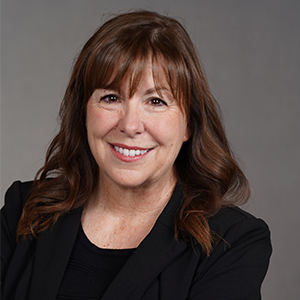
Automatic electronic data delivery is the federal government's preferred channel for receiving mortgage data, and Veros powers a lot of that space. We sat down with Darius Bozorgi, CEO of Veros, to discuss the latest in automation and how lenders and appraisers can adapt.
 HousingWire: How will the Electronic Appraisal Delivery (EAD) portal from the FHA change the way lenders process loans?
HousingWire: How will the Electronic Appraisal Delivery (EAD) portal from the FHA change the way lenders process loans?
Darius Bozorgi: As the FHA has indicated publicly, EAD is being implemented in order to validate appraisals prior to endorsement, a critical change in how lenders are currently interacting with FHA. Today, lenders submit required appraisal data manually. With EAD, all appraisal fields will be collected automatically from the submission, allowing lenders to mitigate errors and experience significant savings. In addition to these lender opportunities, EAD will significantly enhance FHA’s risk management capabilities.
HW: What effect will EAD have on the industry?
 DB: Similar to what we saw when the Uniform Collateral Data Portal (UCDP) was launched, EAD should be an easy transition for lenders and other stakeholders, including appraisers. FHA adopted the Uniform Appraisal Dataset (UAD) standard years ago. EAD will have the same effect as UCDP in terms of clearing any appraisal issues prior to endorsement, resulting in fewer issues for lenders and all related participants. The recently announced FHA premium reductions would lead one to reasonably anticipate an increase in volume. EAD will give FHA 100% diligence on all submitted appraisals, which allows FHA to engage in these types of policies, knowing it has the systems and tools in place to identify and manage risk.
DB: Similar to what we saw when the Uniform Collateral Data Portal (UCDP) was launched, EAD should be an easy transition for lenders and other stakeholders, including appraisers. FHA adopted the Uniform Appraisal Dataset (UAD) standard years ago. EAD will have the same effect as UCDP in terms of clearing any appraisal issues prior to endorsement, resulting in fewer issues for lenders and all related participants. The recently announced FHA premium reductions would lead one to reasonably anticipate an increase in volume. EAD will give FHA 100% diligence on all submitted appraisals, which allows FHA to engage in these types of policies, knowing it has the systems and tools in place to identify and manage risk.
HW: What will be the biggest challenge for lenders using the EAD and how will Veros Pathway help?
DB: Lenders will see a similar concept to UCDP, and that is by design. For lenders that work with the GSEs and FHA, there won't be as much of a challenge, but they will see two primary differences:
1. While there will be overlaps, lenders will see a different set of hard stops in EAD vs. UCDP. As a result, lenders need to be aware that while an appraisal may pass one portal, it does not automatically translate to a green light in the other.
2. EAD is implementing a two-phase approach regarding digital signatures: Identify any transformation of data from the appraiser’s desktop to the time it was received in EAD, and validate, beyond a license number, the identity of the appraiser.
For lenders that do not sell to the GSEs, there may be more of a learning curve. Having never submitted appraisals in a fully electronic format and in the UAD standard, these lenders may need to re-engineer how they receive appraisals and how they package them for submission to the EAD portal.
For either type of lender, Veros’ Pathway product allows them to manage submissions with an automated solution and the ability to preview many EAD and UCDP hard
stops, ensuring the cleanest appraisal possible. As interfaces and requirements change on the back end, Pathway clients will have little or no need to adjust while enjoying more flexibility with appraisal submissions into the secondary market.
HW: What has working with the GSEs on UCDP, and now the FHA on EAD, taught you as a company?
DB: We truly value these partnerships and have learned quite a bit about working with large government and pseudo-government organizations and their regulators. Veros competed against numerous organizations to be the technology provider to both the GSEs and FHA. We were humbled to secure those relationships and very proud to have demonstrated excellence in both mission-critical efforts. Veros took the time and effort to understand objectives, pain points, and what each was trying to achieve, allowing us to play a role in a very collaborative effort on how mortgage data is viewed, standardized, packaged and transmitted throughout the industry. A lot of credit has to be given to these organizations for implementing these paradigm-shift reforms.
HW: What is the next priority for technology providers?
DB: We’d like to be part of the continued evolution of data standards and the transmission of mortgage data across the entire U.S. housing finance system. Private capital is another important issue. By establishing industry standards, with systems that assure these standards are met, full transparency can be achieved, giving participants the confidence to return to the market. Additionally, the same proven models for appraisal should be applied across the entire loan file, further stabilizing and growing the U.S. housing market.







